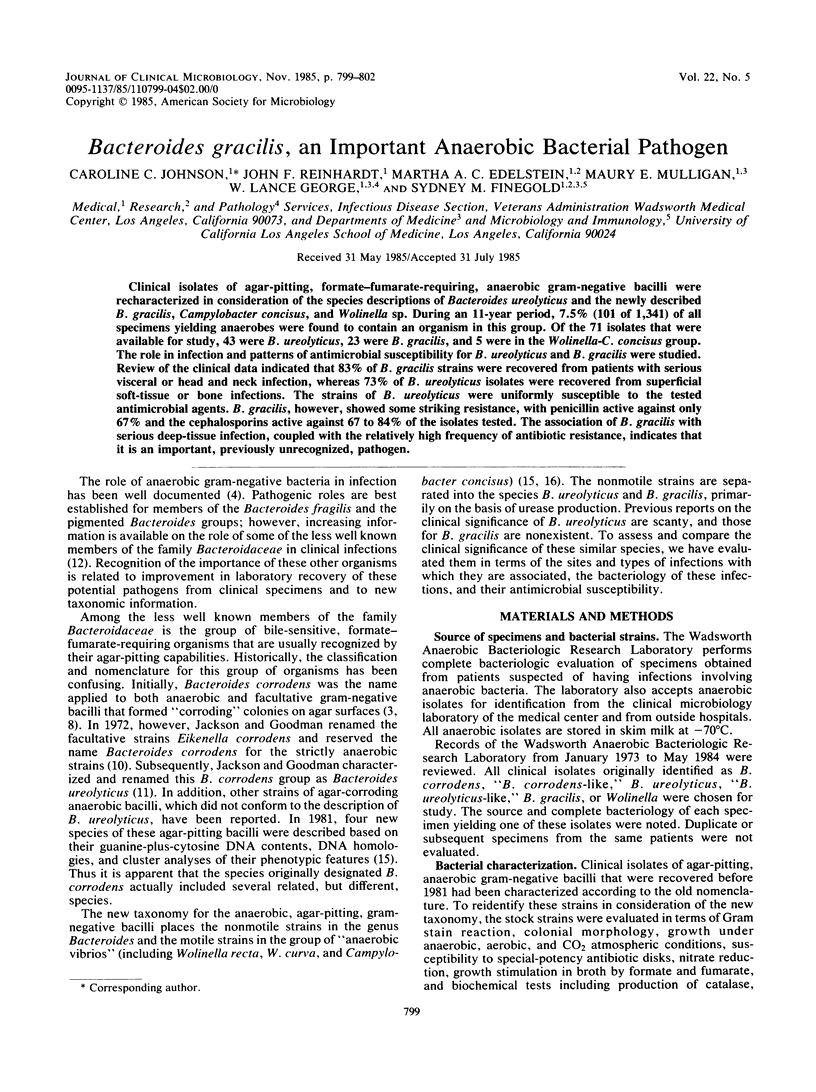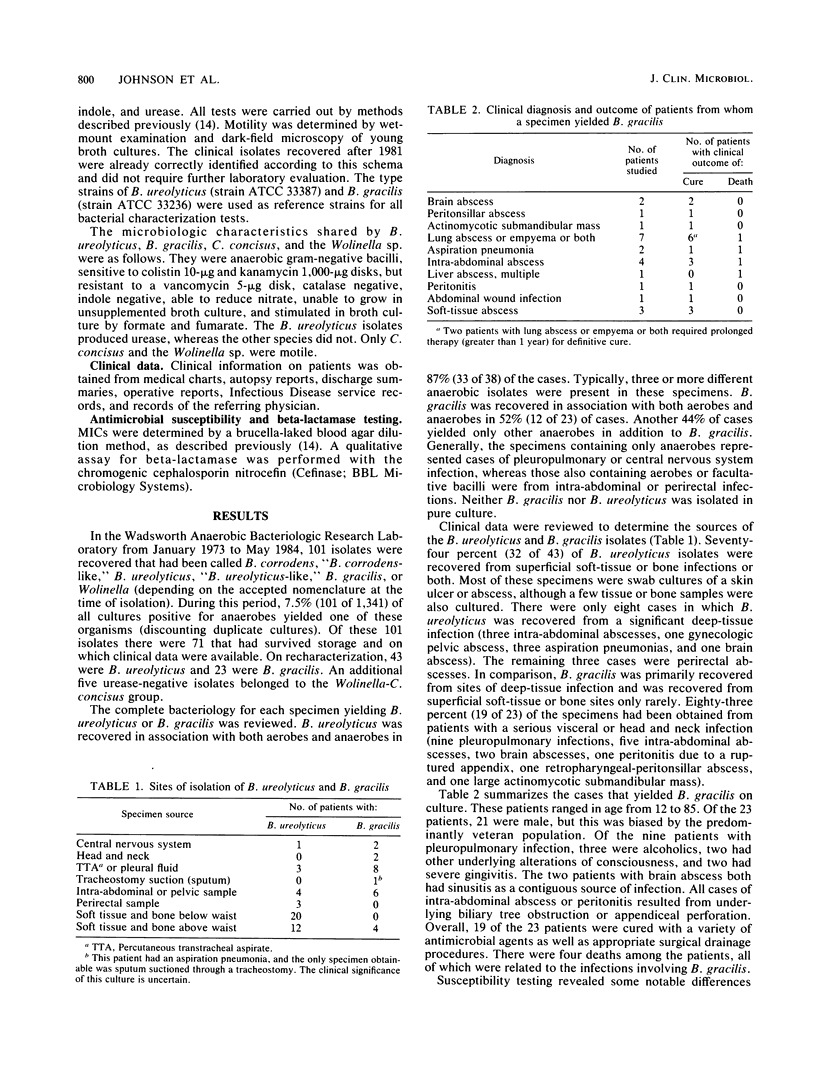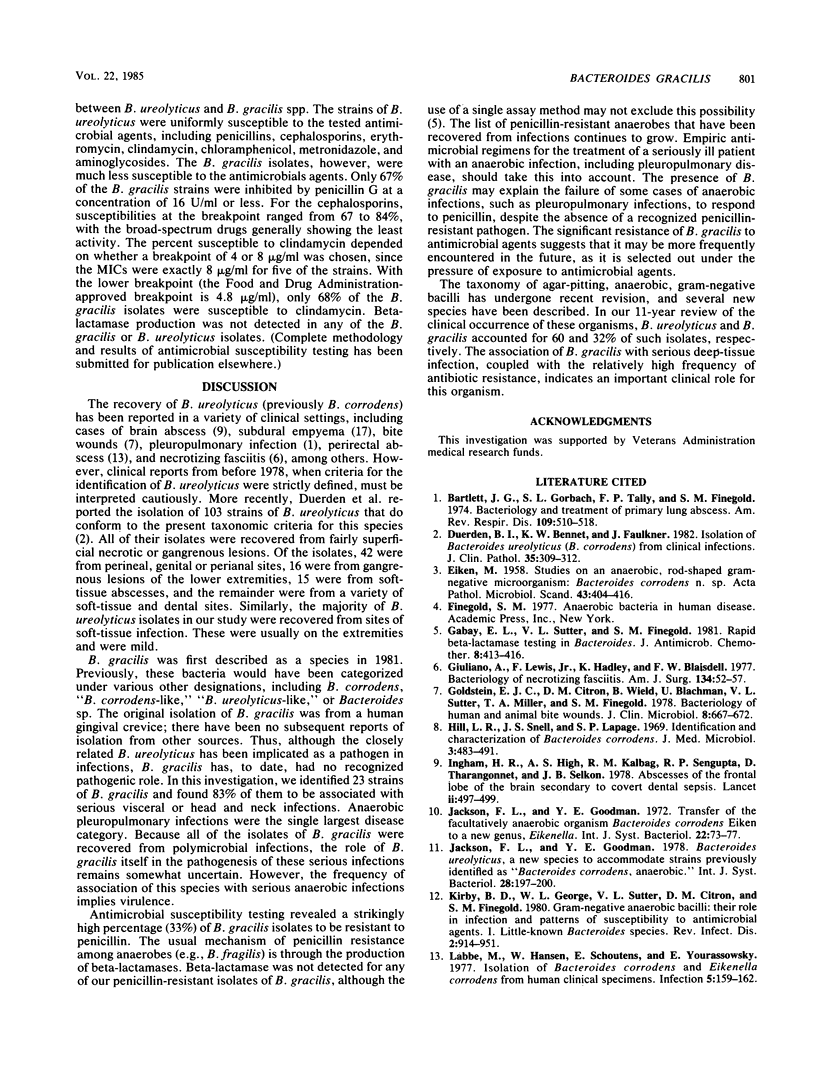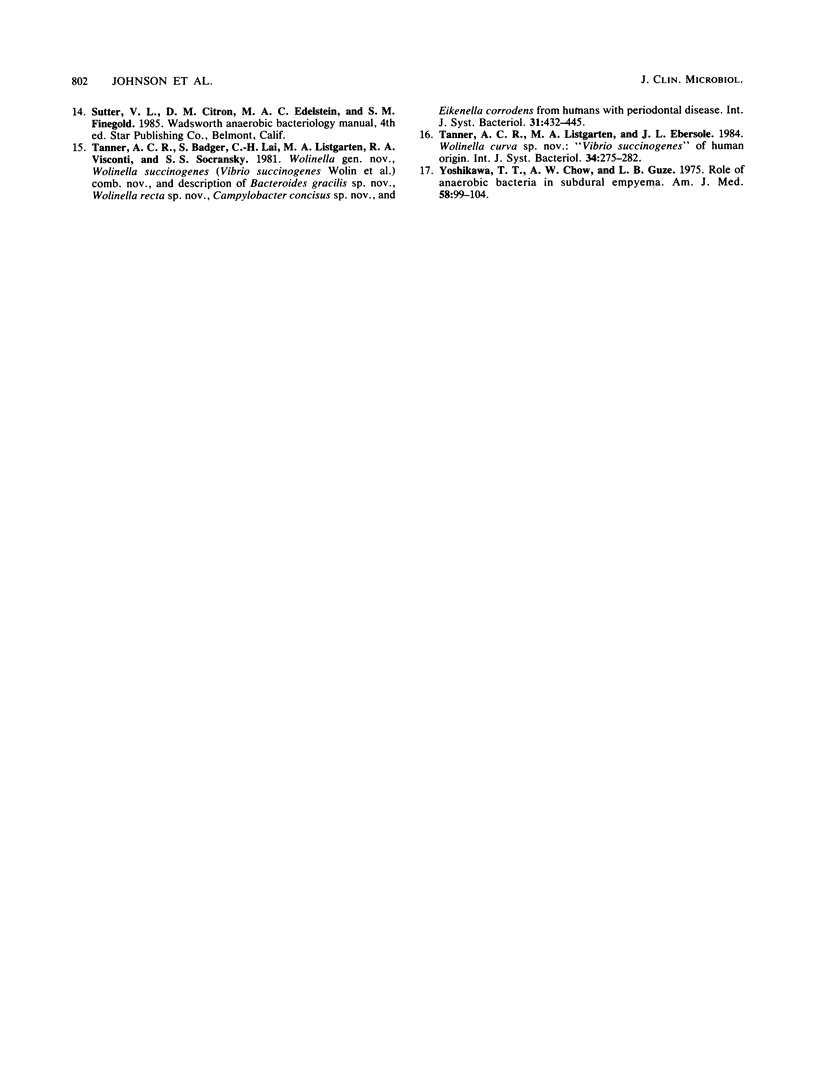Abstract
Clinical isolates of agar-pitting, formate-fumarate-requiring, anaerobic gram-negative bacilli were recharacterized in consideration of the species descriptions of Bacteroides ureolyticus and the newly described B. gracilis, Campylobacter concisus, and Wolinella sp. During an 11-year period, 7.5% (101 of 1,341) of all specimens yielding anaerobes were found to contain an organism in this group. Of the 71 isolates that were available for study, 43 were B. ureolyticus, 23 were B. gracilis, and 5 were in the Wolinella-C. concisus group. The role in infection and patterns of antimicrobial susceptibility for B. ureolyticus and B. gracilis were studied. Review of the clinical data indicated that 83% of B. gracilis strains were recovered from patients with serious visceral or head and neck infection, whereas 73% of B. ureolyticus isolates were recovered from superficial soft-tissue or bone infections. The strains of B. ureolyticus were uniformly susceptible to the tested antimicrobial agents. B. gracilis, however, showed some striking resistance, with penicillin active against only 67% and the cephalosporins active against 67 to 84% of the isolates tested. The association of B. gracilis with serious deep-tissue infection, coupled with the relatively high frequency of antibiotic resistance, indicates that it is an important, previously unrecognized, pathogen.
Full text
PDF



Selected References
These references are in PubMed. This may not be the complete list of references from this article.
- Bartlett J. G., Gorbach S. L., Tally F. P., Finegold S. M. Bacteriology and treatment of primary lung abscess. Am Rev Respir Dis. 1974 May;109(5):510–518. doi: 10.1164/arrd.1974.109.5.510. [DOI] [PubMed] [Google Scholar]
- Duerden B., Bennet K. W., Faulkner J. Isolation of Bacteroides ureolyticus (B corrodens) from clinical infections. J Clin Pathol. 1982 Mar;35(3):309–312. doi: 10.1136/jcp.35.3.309. [DOI] [PMC free article] [PubMed] [Google Scholar]
- EIKEN M. Studies on an anaerobic, rodshaped, gram-negative microorganism: Bacteroides corrodens n. sp. Acta Pathol Microbiol Scand. 1958;43(4):404–416. [PubMed] [Google Scholar]
- Gabay E. L., Sutter V. L., Finegold S. M. Rapid beta-lactamase testing in bacteroides. J Antimicrob Chemother. 1981 Nov;8(5):413–416. doi: 10.1093/jac/8.5.413. [DOI] [PubMed] [Google Scholar]
- Giuliano A., Lewis F., Jr, Hadley K., Blaisdell F. W. Bacteriology of necrotizing fasciitis. Am J Surg. 1977 Jul;134(1):52–57. doi: 10.1016/0002-9610(77)90283-5. [DOI] [PubMed] [Google Scholar]
- Goldstein E. J., Citron D. M., Wield B., Blachman U., Sutter V. L., Miller T. A., Finegold S. M. Bacteriology of human and animal bite wounds. J Clin Microbiol. 1978 Dec;8(6):667–672. doi: 10.1128/jcm.8.6.667-672.1978. [DOI] [PMC free article] [PubMed] [Google Scholar]
- Hill L. R., Snell J. J., Lapage S. P. Identification and characterisation of Bacteroides corrodens. J Med Microbiol. 1970 Aug;3(3):483–491. doi: 10.1099/00222615-3-3-483. [DOI] [PubMed] [Google Scholar]
- Ingham H. R., Kalbag R. M., Tharagonnet D., High A. S., Sengupta R. P., Selkon J. B. Abscesses of the frontal lobe of the brain secondary to covert dental sepsis. Lancet. 1978 Sep 2;2(8088):497–499. doi: 10.1016/s0140-6736(78)92220-1. [DOI] [PubMed] [Google Scholar]
- Kirby B. D., George W. L., Sutter V. L., Citron D. M., Finegold S. M. Gram-negative anaerobic bacilli: their role in infection and patterns of susceptibility to antimicrobial agents. I. Little-known Bacteroides species. Rev Infect Dis. 1980 Nov-Dec;2(6):914–951. doi: 10.1093/clinids/2.6.914. [DOI] [PubMed] [Google Scholar]
- Labbé M., Hansen W., Schoutens E., Yourassowsky E. Isolation of Bacteroides corrodens and Eikenella corrodens from human clinical specimens. Comparative study of incidence and methods of identification. Infection. 1977;5(3):159–162. doi: 10.1007/BF01639752. [DOI] [PubMed] [Google Scholar]
- Yoshikawa T. T., Chow A. W., Guze L. B. Role of anaerobic bacteria in subdural empyema. Report of four cases and review of 327 cases from the English literature. Am J Med. 1975 Jan;58(1):99–104. doi: 10.1016/0002-9343(75)90539-2. [DOI] [PubMed] [Google Scholar]


